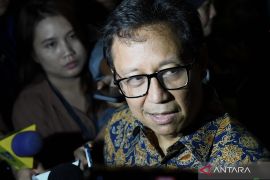"Since 2015, the government has continued to increase the allocation for village fund from Rp20.76 trillion in 2015 to Rp46.98 trillion in 2016. In 2017, the government has disbursed Rp60 trillion of village fund," the president said in a limited meeting on the acceleration of rural development here on Wednesday.
Jokowi admitted that he has received reports on four districts and cities that are yet to receive the fund from the central state treasury due to delay from the local administrations.
In addition, 241 villages are yet to receive the fund due to various factors.
"I hope that these problems could be solved immediately. I want to assure that all villages would receive the fund in 2017," Jokowi stressed.
He expressed hope that the fund could effectively help villagers, especially to alleviate poverty in rural areas.
He emphasized that the fund should be used to increase economic productivity in villages and to reduce disparities among villages.
"According to data, around 29 percent of the village fund was used for the improvement of infrastructure that would support rural economy, such as roads, bridges, village markets, clean water facilities, water reservoirs, and irrigation systems," he noted.
He stated that the next stage of fund disbursement should focus on the development of the economic potential of villages, especially in agriculture and fishery sectors, as well as small-scale industries involving local residents.
"We should neither use partial nor sectoral approach in developing the villages economic potential, but it should be integrative from upstream to downstream," Jokowi remarked.
The government in 2017 has focused on efforts to narrow inequality among regions and between rural and urban areas that has sparked an increase in urbanization.
"In 2010, the urban population was recorded at 49.8 percent. In 2015, it (urban population) increased to 53.3 percent. By 2025, the population is predicted to reach 60 percent of the total population," he revealed.
The population living in poverty in rural area has reached 13.96 percent, compared to 7.7 percent of poor people living in urban areas.(*)
Editor: Heru Purwanto
Copyright © ANTARA 2017











